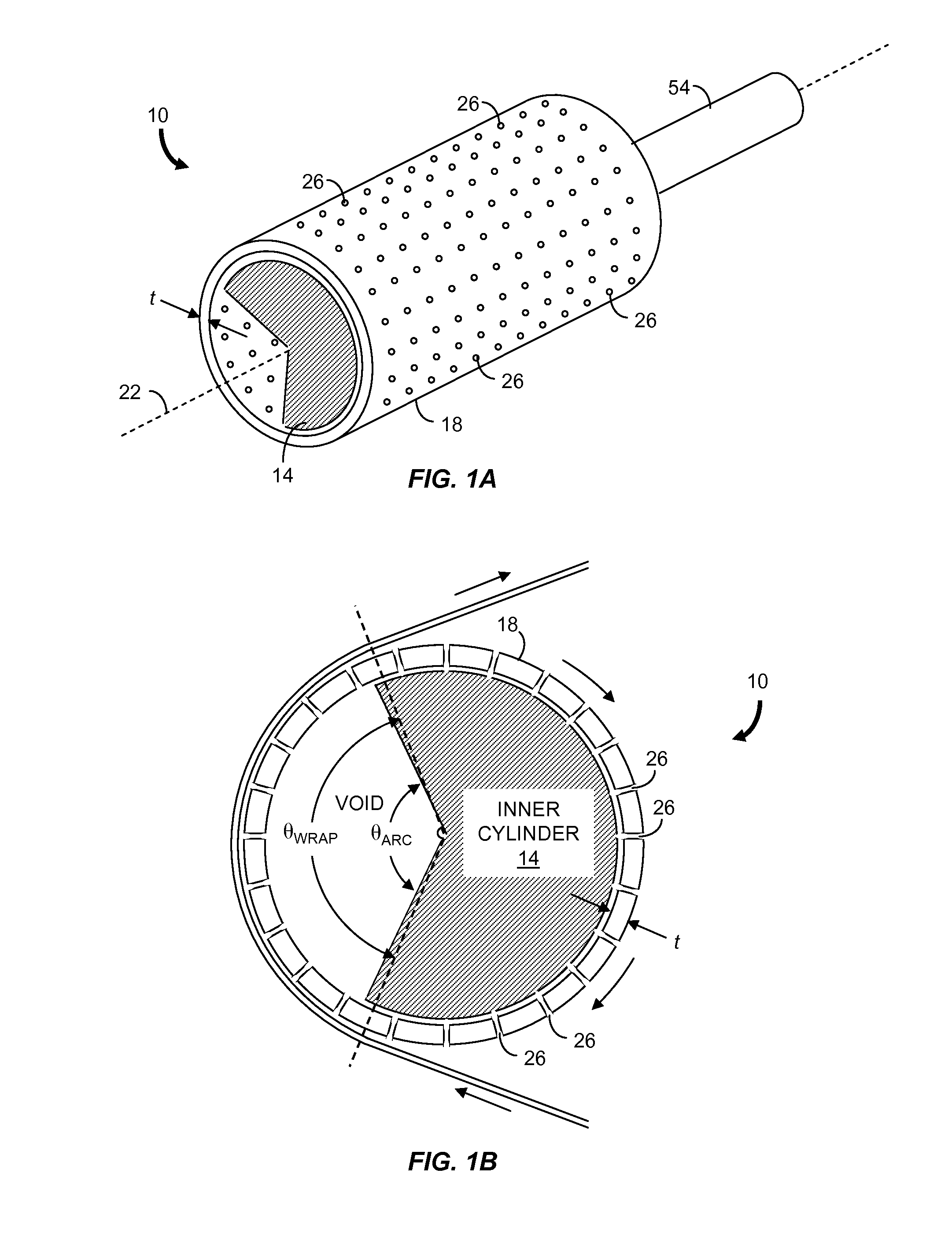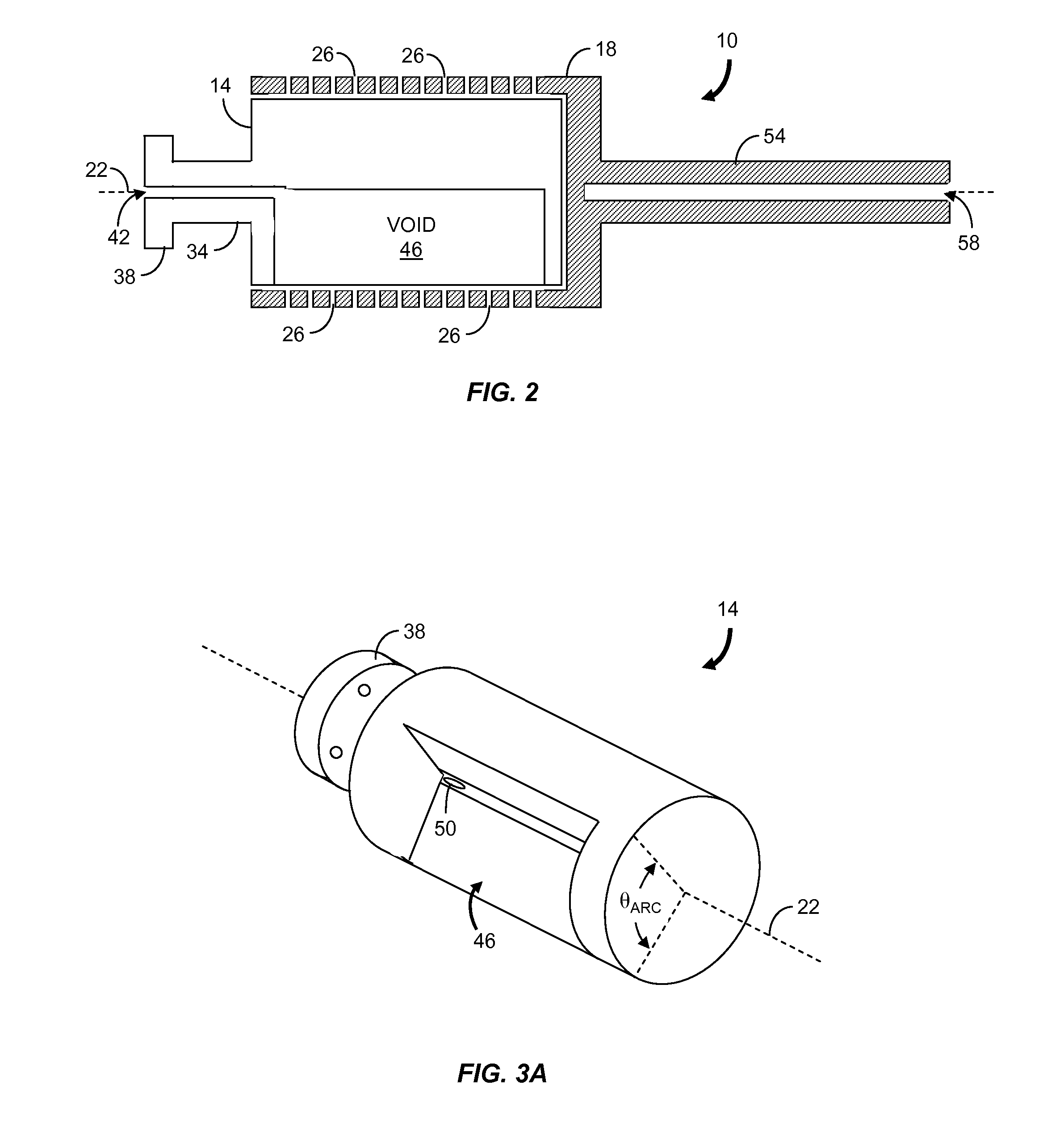Cooling apparatus for a web deposition system
a technology of cooling apparatus and web, which is applied in the direction of drying solid materials, drying machines, textiles and paper, etc., can solve the problems of increasing the temperature of the web, and damage to the web, so as to increase the heat transfer and increase the heat transfer
- Summary
- Abstract
- Description
- Claims
- Application Information
AI Technical Summary
Benefits of technology
Problems solved by technology
Method used
Image
Examples
Embodiment Construction
[0012]A common technique for cooling a web in a vacuum environment is to transport the web over a cooled roll or drum so that heat is transferred to the drum through contact. Cooling is adjusted by varying the temperature of the roll and the wrap angle of the web around the roll. The cooling rate is proportional to h*(T0−7) where h is the heat transfer coefficient, T0 is the temperature of the cooling roll and T is the temperature of the web. In vacuum, the interface between two materials generally does not have a high heat transfer coefficient h. More specifically, the natural roughness of a material at a microscopic level results in sharp points of contact; however, as heat conduction is proportional to the cross-sectional contact area, the transfer of heat across the interface is substantially limited. The introduction of a pliable material, such as an elastomer or a gas, between the materials results in a substantial improvement in cooling efficiency. The pliable material increa...
PUM
| Property | Measurement | Unit |
|---|---|---|
| Temperature | aaaaa | aaaaa |
| Volume | aaaaa | aaaaa |
| Heat | aaaaa | aaaaa |
Abstract
Description
Claims
Application Information
 Login to View More
Login to View More - R&D
- Intellectual Property
- Life Sciences
- Materials
- Tech Scout
- Unparalleled Data Quality
- Higher Quality Content
- 60% Fewer Hallucinations
Browse by: Latest US Patents, China's latest patents, Technical Efficacy Thesaurus, Application Domain, Technology Topic, Popular Technical Reports.
© 2025 PatSnap. All rights reserved.Legal|Privacy policy|Modern Slavery Act Transparency Statement|Sitemap|About US| Contact US: help@patsnap.com



